Strength Analysis of an Open Car Body with Honeycomb Elements during Ro-Ro Transportation
Abstract
:1. Introduction
- To develop measures to improve the bearing structure of an open car for safe transportation via a train ferry;
- To determine the load on the bearing structure of an open car during rolling motions;
- To determine the load on the bearing structure of an open car during the turning motions of a train ferry;
- To investigate the strength of the bearing structure of an open car transported via a train ferry.
2. Methods and the Data
- Angular displacements around the longitudinal axle X at the angle θ (rolling motion) (Figure 4). At the same time, it was taken into account that the car was symmetrically fixed on the deck with eight ties (four on each side). The ship’s centre of gravity was at the centre of its displacement (YZ coordinate system). The Y′Z′ coordinate system was portable. Under the action of a perturbing influence Pc on the car with a certain height hc, it was displaced at angle θ.
- The turning motion of the train ferry loaded with cars while approaching the dock.
3. The Results of Calculating the Load on the Open Car Body with Honeycomb Panels
- The forces and moments caused by the ferry engines;
- The forces on the steering equipment;
- The forces and inertia moments, including those from the attached water masses;
- The hydraulic mechanic forces and moments on the ferry body.
- Building the finite element model of the open car body;
- Developing its calculation scheme;
- Developing the body-fixing scheme;
- Selecting the construction material;
- Carrying out strength calculations, in which the von Mises criterion was used (the fourth theory of strength). It was taken as the calculation criterion because the material of the body structure was isotropic.
4. Discussion
5. Conclusions
- This study presents an improvement of the bearing structure of an open car in order to provide safe transportation via train ferries. It includes the application of elastic, viscous honeycomb panels between the vertical sheets of the intermediate, end, and body bolster beams; the intermediate beams of the open car frame are made of a boxed section. This solution may reduce the load on the bearing structure of an open car transported via sea. The higher efficiency of a honeycomb panel can be achieved at a viscous resistance coefficient in the range of 150–165 kN s/m and a stiffness in the range of 500–520 kN/m.
- This study also includes a determination of the bearing structure of an open car during rolling motions. As calculated, the use of honeycomb panels can decrease the dynamic load by about 25% more in comparison to that of a standard structure. The maximum acceleration for the bearing structure of an open car with the standard frame was 0.38, and that for the improved structure was 0.29 m/s2.
- The authors determined the load of the bearing structure of an open car during the turning motion of a train ferry; it was found that, with a turning speed of the train ferry of v = 0.36 m/s and a turning radius of R = 79, the value of the centrifugal force was C = 39 kN. The components of the centrifugal force acting on the bearing structure of an open car through the chain binders were Fx = 4.9 kN and Fy = 8.4 kN.
- The strength of the bearing structure of an open car transported via a train ferry was studied. The strength of the bearing structure of an open car transported via sea was calculated.
- The results of the calculation made it possible to conclude that the maximum equivalent stresses were in the bolster beam; their value was about 240 MPa, which was 30% lower than the loads in the standard bolster beam. The maximum displacements in the bearing structure of an open car were in the middle part of the centre sill; they were about 5 mm.
- The results of the strength calculation for the bearing structure of an open car during the turning motion of a train ferry demonstrated that the maximum equivalent stress was about 185 MPa, and the displacements were about 5 mm. Thus, the strength of the bearing structure of an open car has been provided.
Author Contributions
Funding
Institutional Review Board Statement
Informed Consent Statement
Data Availability Statement
Conflicts of Interest
References
- Soloviova, L.; Strelko, O.; Isaienko, S. Container Transport System as a Means of Saving Resources. In In IOP Conference Series: Earth and Environmental Science, In Proceedings of the International Science and Technology Conference “EarthScience”, Russky Island, Russian Federation, 10–12 December 2020; IOP Science: Bristol, UK, 2020; Volume 459, p. 05200. [Google Scholar] [CrossRef]
- Burmaka, I.; Borodulin, A.; Fedorov, D.; Petrychenko, O. External Control of the Divergence Process Taking into Account the Form of the Safety Domain. In Proceedings of the Transport Means-Proceedings of the International Conference, Kaunas, Lithuania, 6–8 October 2021; pp. 579–583. [Google Scholar]
- Sotnikov, E.A. World Railways from XX to XXI Century, 1st ed.; Transport: Moscow, Russia, 1993; pp. 1–200. (In Russian) [Google Scholar]
- Antipin, D.Y.; Racin, D.Y.; Shorokhov, S.G. Justification of a Rational Design of the Pivot Center of the OpenTop Wagon Frame by means of Computer Simulation. In Procedia Engineering 150, Proceedings of the International Conference on Industrial Engineering, Tehran, Iran, 25–26 January 2016; Elsevier: Amsterdam, The Netherlands, 2016; pp. 150–154. [Google Scholar] [CrossRef]
- Milovanovic, V.; Dunic, V.; Rakic, D.; Zivkovic, M. Identification causes of cracking on the underframe of wagon for containers transportation—Fatigue strength assessment of wagon welded joints. Eng. Fail. Anal. 2013, 31, 118–131. [Google Scholar] [CrossRef]
- Stoilov, V.; Simic, G.; Purgic, S.; Milkovic, D.; Slavchev, S.; Radulovic, S.; Maznichki, V. Comparative analysis of the results of theoretical and experimental studies of freight wagon Sdggmrss-twin. In IOP Conference Series: Materials Science and Engineering, Proceedings of the International Scientific Conference on Aeronautics, Automotive and Railway Engineering and Technologies BulTrans2019, Sozopol, Bulgaria, 10–12 September 2019; Volume 664, p. 012026. [CrossRef]
- Bulychev, M.A.; Antipin, D.Y. Improvement of the method for calculating the strength of the upper straps of the side walls of gondola cars. Bull. Bryansk State Tech. Univ. 2019, 3, 58–64. [Google Scholar] [CrossRef]
- Zhang, D.; Tang, Y.; Sun, Z.; Peng, Q. Optimising the location of wagon gravity centre to improve the curving performance. Vehicle Syst. Dyn. 2020, 60, 1627–1641. [Google Scholar] [CrossRef]
- Shvets, A.A. Peculiarities of determining the moments of inertia of freight car bodies. Bull. Railw. Transp. Certif. 2018, 5, pp. 20–34. Available online: http://eadnurt.diit.edu.ua/bitstream/123456789/10870/1/Shvets%20.pdf (accessed on 18 May 2023). (In Russian).
- Lovska, A.; Fomin, O.; Píštěk, V.; Kučera, P. Dynamic Load and Strength Determination of Carrying Structure of Wagons Transported by Ferries. J. Mar. Sci. Eng. 2020, 8, 902. [Google Scholar] [CrossRef]
- Lovska, A. Simulation of loads on the carrying structure of an articulated flat car in combined transportation. Int. J. Eng. Technol. 2018, 7, 140–146. [Google Scholar] [CrossRef]
- Hilmola, O.-P.; Li, W.; Panova, Y. Development Status and Future Trends for Eurasian Container Land Bridge Transport. Logistics 2021, 5, 18. [Google Scholar] [CrossRef]
- Xing, L.; Xu, Q.; Cai, J.; Jin, Z. Distributed Robust Chance-Constrained Empty Container repositioning Optimization of the China Railway Express. Symmetry 2020, 12, 706. [Google Scholar] [CrossRef]
- Karam, A.; Eltawil, A.; Hegner Reinau, K. Energy-Efficient and Integrated Allocation of Berths, Quay Cranes, and Internal Trucks in Container Terminals. Sustainability 2020, 12, 3202. [Google Scholar] [CrossRef]
- Lovskaya, A. Assessment of dynamic efforts to bodies of wagons at transportation with railway ferries. East. Eur. J. Enterp. Technol. 2014, 3, 36–41. [Google Scholar] [CrossRef]
- Lovska, A.O. Improvement of Load-Bearing Structures of Gondola Cars to Increase the Reliability of Their Fastening on Railway Ferries. Ph.D. Thesis, Ukrainian State University of Railway Nrabsport, Kyiv, Ukraine, 27 June 2013. Available online: https://catalog.odnb.odessa.ua/opac/index.php?url=/notices/index/IdNotice:286648/Source:default (accessed on 20 January 2023). (In Ukrainian).
- Lopatukhin, L.I.; Bukhanovsky, A.V.; Ivanov, S.V.; Chernysheva, E.S. Reference Data on the Regime of Wind and Waves of the Baltic, North., Black, Azov and Mediterranean Seas; Russian Maritime Register of Shipping: St. Petersburg, Russia, 2006; Available online: https://files.stroyinf.ru/Data2/1/4293747/4293747775.pdf (accessed on 4 October 2023). (In Russian)
- Das, A.; Agarwal, G. Compression, tension & lifting stability on a meter gauge flat Wagon: An experimental approach. Aust. J. Mech. Eng. 2020, 20, 1113–1125. [Google Scholar] [CrossRef]
- Leitner, B.; Figuli, L. Fatigue life prediction of mechanical structures under stochastic loading. In Proceedings of the Machine Modelling and Simulations 2017 (MMS 2017), MATEC Web of Conferences, Žilina, Slovakia, 5–8 September 2017; Volume 157, p. 02024. [Google Scholar] [CrossRef]
- Panchenko, S.; Vatulia, G.; Lovska, A.; Ravlyuk, V.; Elyazov, I.; Huseynov, I. Influence of structural solutions of an improved brake cylinder of a freight car of railway transport on its load in operation. EUREKA: Phys. Eng. 2022, 6, 45–55. [Google Scholar] [CrossRef]
- Bogach, I.V.; Krakovetsky, O.Y.; Kylyk, L.V. Numerical Methods for Solving Differential Equations Using; MathCad: Vinnytsia, Ukraine, 2020; 106p. (In Ukrainian) [Google Scholar]
- Dvorak, Z.; Leitner, B.; Novak, L. Software support for railway traffic simulation under restricted conditions of the rail section. Procedia Eng. 2016, 134, 245–255. [Google Scholar] [CrossRef]
- Stastniak, P.; Moravcik, M.; Smetanka, L. Investigation of strength conditions of the new wagon prototype type Zans. In Proceedings of the 23rd Polish-Slovak Scientific Conference on Machine Modelling and Simulations (MMS 2018), MATEC Web of Conferences, Rydzyna, Poland, 4–7 September 2019; Volume 254, p. 02037. [Google Scholar] [CrossRef]
- Moravec, J. Magnetic field application in area sheet metal forming. In Proceedings of the METAL 2016: 25th Anniversary International Conference on Metallurgy and Materials, Brno, Czech Republic, 25–27 May 2016; pp. 303–309. [Google Scholar]
- Goolak, S.; Liubarskyi, B.; Riabov, I.; Chepurna, N.; Pohosov, O. Simulation of a direct torque control system in the presence of winding asymmetry in induction motor. Eng. Res. Express 2023, 5, 025070–025086. [Google Scholar] [CrossRef]
- Goolak, S.; Liubarskyi, B.; Riabov, I.; Lukoševičius, V.; Keršys, A.; Kilikevičius, S. Analysis of the Efficiency of Traction Drive Control Systems of Electric Locomotives with Asynchronous Traction Motors. Energies 2023, 16, 3689. [Google Scholar] [CrossRef]
- Fomin, O.; Lovska, A. Determination of dynamic loading of bearing structures of freight wagons with actual dimensions. East. Eur. J. Enterp. Technol. 2021, 2, 6–15. [Google Scholar] [CrossRef]
- Fanta, O.; Lopot, F.; Kubovy, P.; Jelen, K.; Hylmarova, D.; Svoboda, M. Kinematic analysis and head injury criterion in a pedestrian collision with a tram at the speed of 10 and 20 km.h−1. Manuf. Technol. 2022, 22, pp. 139–145. Available online: https://journalmt.com/pdfs/mft/2022/02/08.pdf (accessed on 2 May 2023).
- Vatulia, G.; Komagorova, S.; Pavliuchenkov, M. Optimization of the truss beam. In Verification of the calculation results. In Proceedings of the 7th International Scientific Conference “Reliability and Durability of Railway Transport Engineering Structures and Buildings” (Transbud-2018), MATEC Web Conference, Kharkiv, Ukraine, 14–16 November 2018; Volume 230, p. 02037. [Google Scholar] [CrossRef]
- Trakowski, S.; Nieoczym, A.; Caban, J.; Gardynski, L.; Vrabel, J. Reconstruction of road accident using video recording. In Proceedings of the III International Conference of Computational Methods in Engineering Science (CMES’18), MATEC Web of Conferences, Kazimierz Dolny, Poland, 22–24 November 2018; Volume 252, p. 05023. [Google Scholar] [CrossRef]
- Svoboda, M.; Chalupa, M.; Cernohlavek, V.; Svasta, A.; Meller, A. Measuring the quality of driving characteristics of a passenger car with passive shock absorbers. Manuf. Technol. 2023, 23, pp. 118–126. Available online: https://mt.ujep.cz/pdfs/mft/2023/01/12.pdf (accessed on 12 April 2023).
- Yevtushenko, A.; Topczewska, K.; Zamojski, P. Influence of thermal sensitivity of functionally graded materials on temperature during braking. Materials 2022, 15, 963. [Google Scholar] [CrossRef] [PubMed]
- Kondratiev, A.; Gaidachuk, V.; Nabokina, T.; Tsaritsynskyi, A. New Possibilities of Creating the Efficient Dimensionally Stable Composite Honeycomb Structures for Space Applications. In Integrated Computer Technologies in Mechanical Engineering. Advances in Intelligent Systems and Computing; Springer: Cham, Switzerland, 2020; Volume 1113. [Google Scholar] [CrossRef]
- Krol, O.; Sokolov, V. Modeling of Spindle Node Dynamics Using the Spectral Analysis Method. In Proceedings of the 3rd International Conference on Design Simulation, Manufacturing: The Innovation Exchange, DSMIE-2020, Kharkiv, Ukraine, , 9–12 June 2020; Volume 1, pp. 35–44. [Google Scholar] [CrossRef]
- Krasoń, W.; Niezgoda, T.; Stankiewicz, M. Innovative Project of Prototype Railway Wagon and Intermodal Transport System. Transp. Res. Procedia 2016, 14, 615–624. [Google Scholar] [CrossRef]
- Kapitsa, M.; Mikhailov, E.; Kliuiev, S.; Semenov, S.; Kovtanets, M. Study of rail vehicles movement characteristics improvement in curves using fuzzy logic mechatronic systems. In Proceedings of the 2nd International Scientific and Practical Conference “Energy-Optimal Technologies, Logistic and Safety on Transport” (EOT-2019), MATEC Web of Conferences, Lviv, Ukraine, 19–20 September 2019; Volume 294, p. 03019. [Google Scholar] [CrossRef]
- DSTU 7598: 2014; Freight cars. General Requirements for Calculations and Design of New and Modernized Cars of 1520 mm track (Non-Self-Propelled). UkrNDNTS: Kyiv, Ukraine, 2015; 162p. (In Ukrainian)
- Marine Engineering Bureau. Manual on Securing Cargo for the Ship “Petrovsk”; Marine Engineering Bureau: Odessa, Ukraine, 2005. (In Russian) [Google Scholar]
- Šutka, J.; Koňar, R.; Moravec, J.; Petričko, L. Arc welding renovation of permanent steel molds. Arch. Foundry Eng. 2021, 21, 34–40. [Google Scholar]
- Moravec, J.; Gryc, K. Forming and heat treatment of modern metallic materials. Metals 2021, 11, 1106. [Google Scholar] [CrossRef]
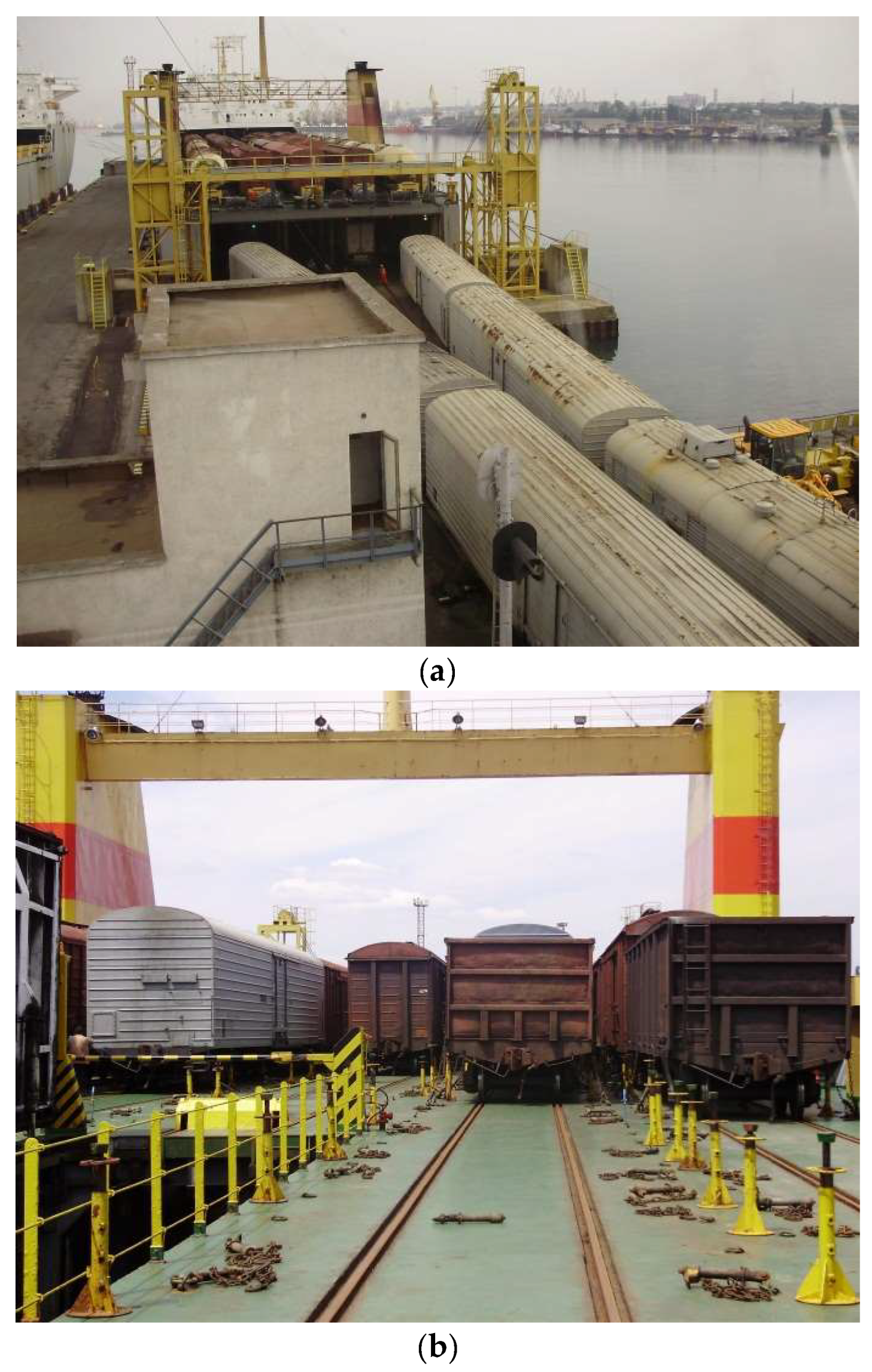
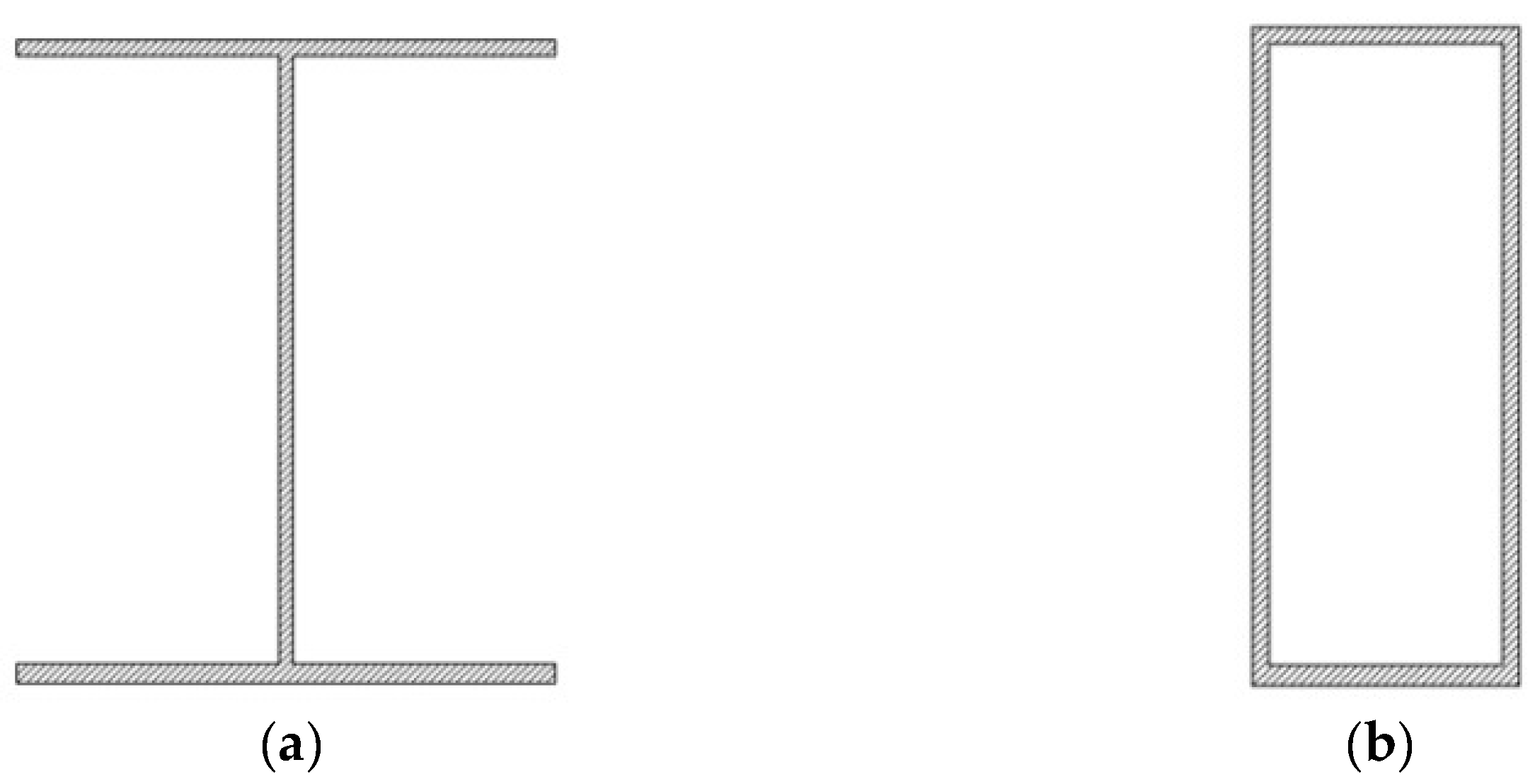
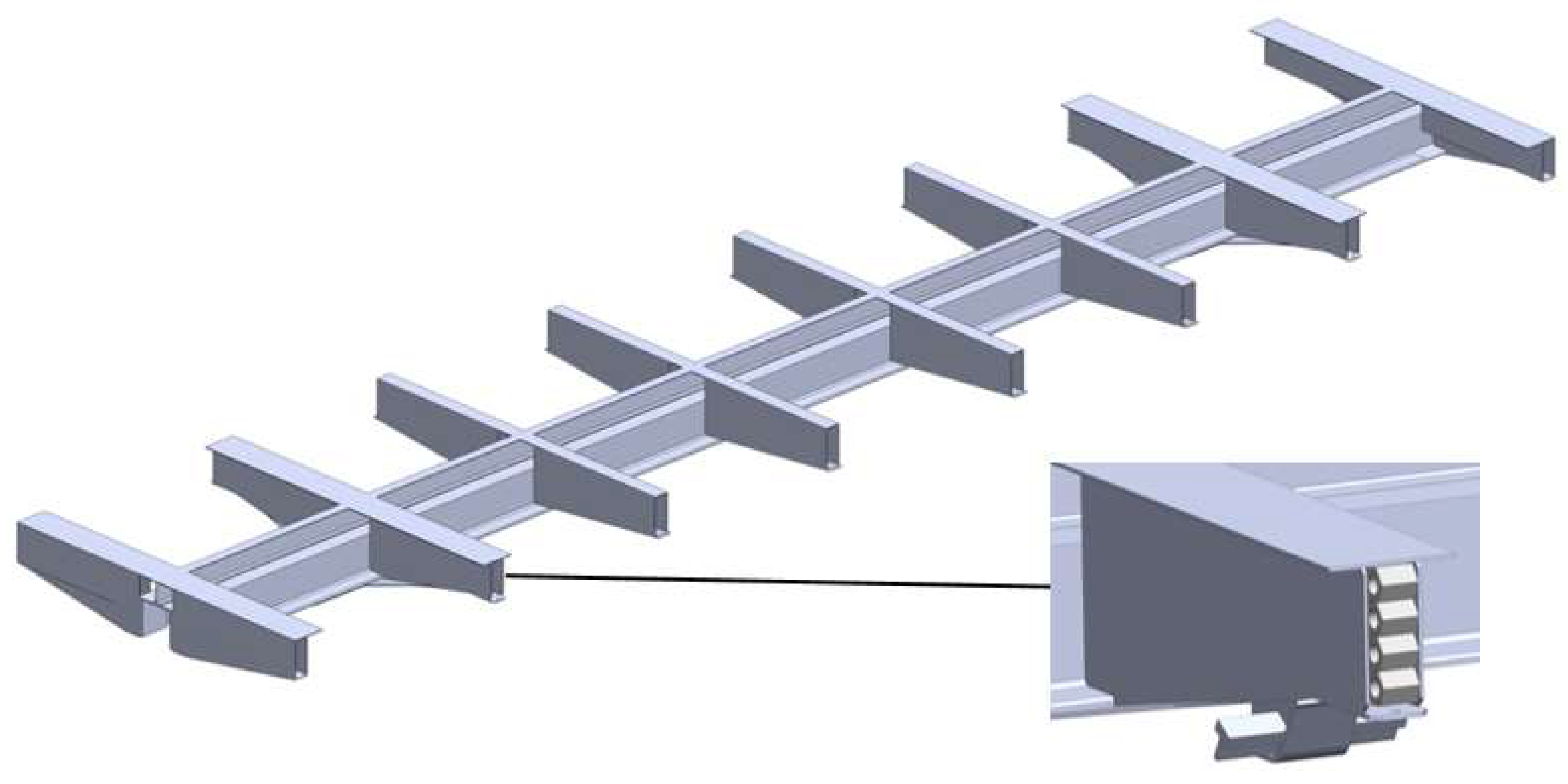
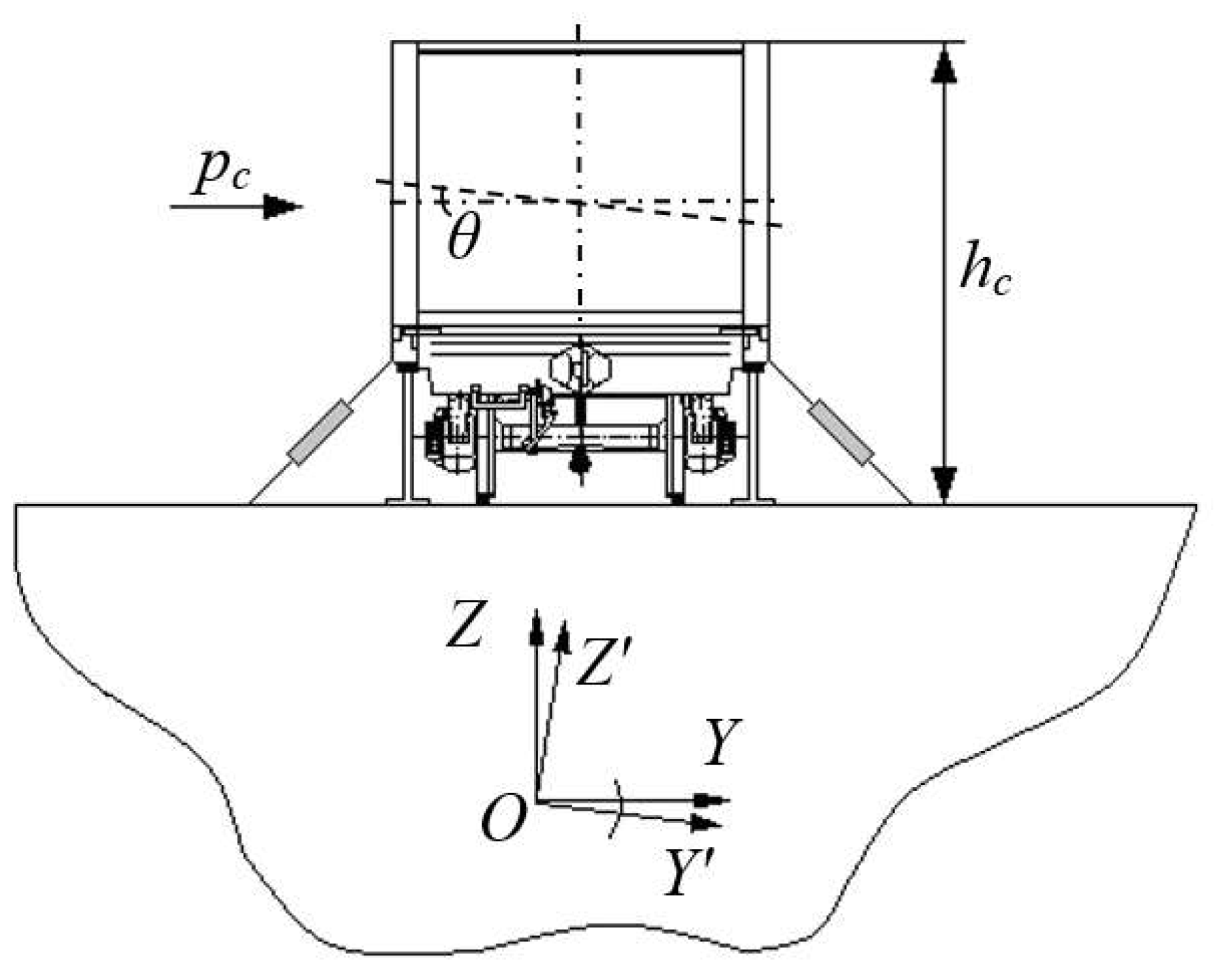

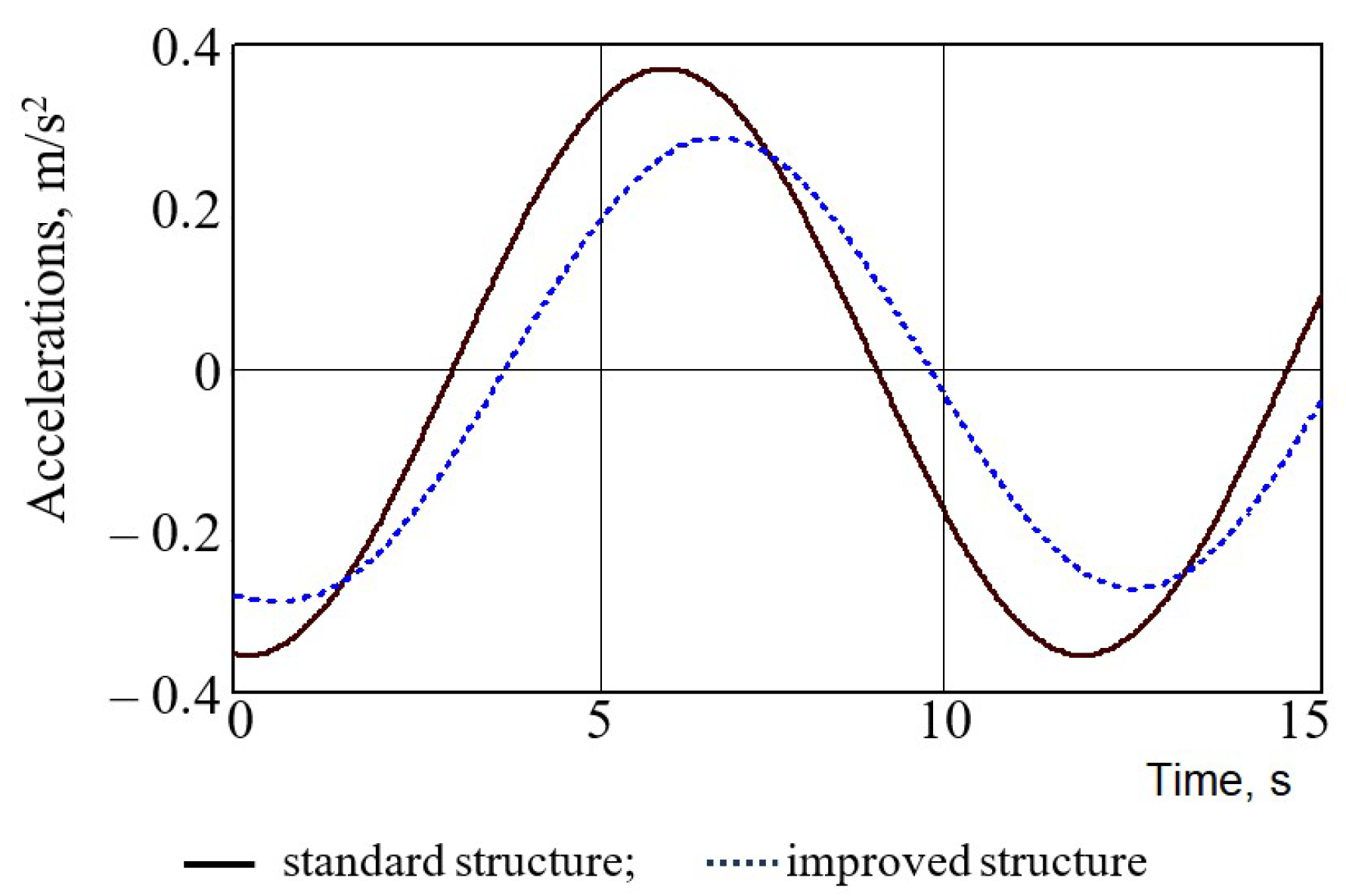
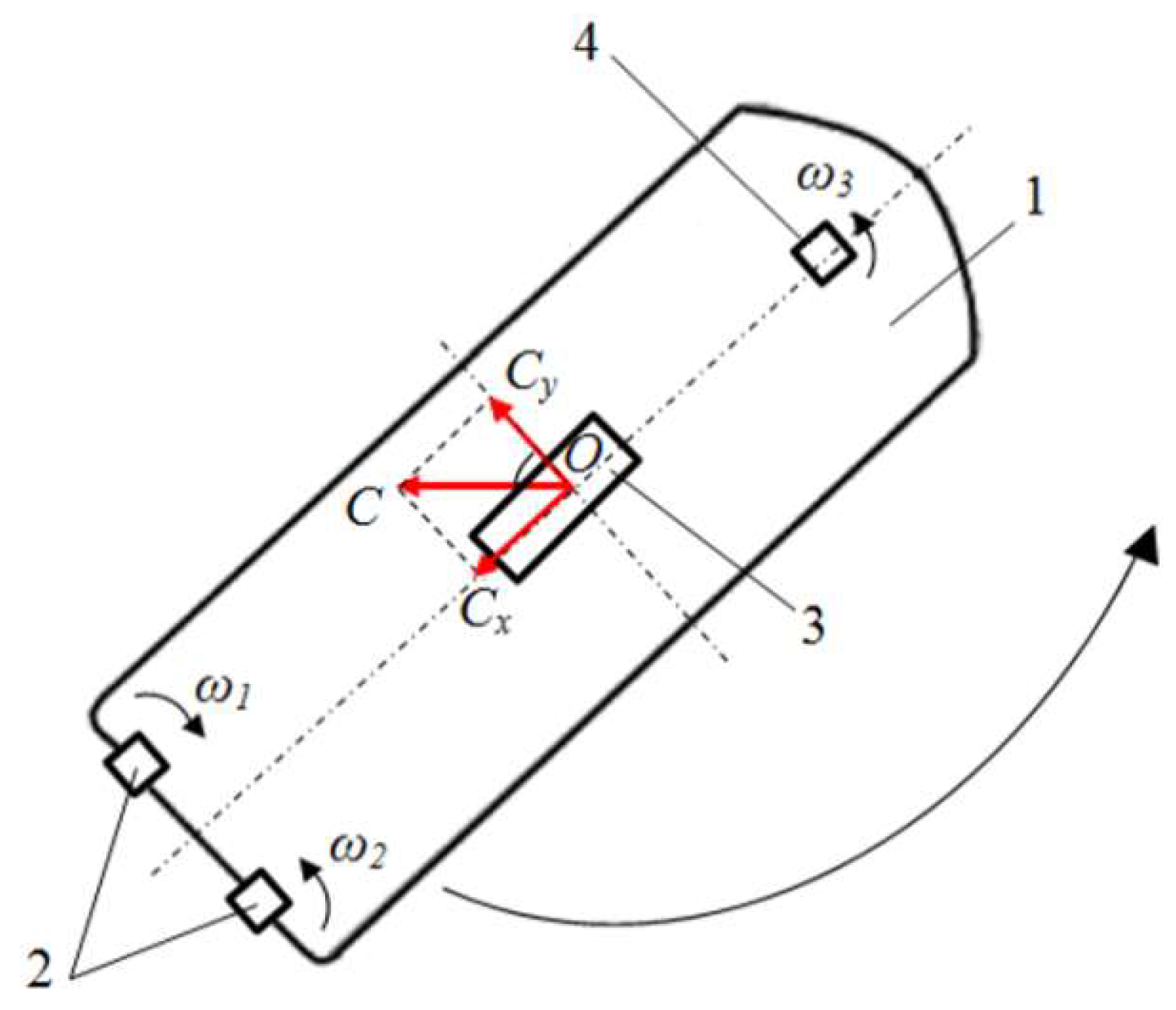

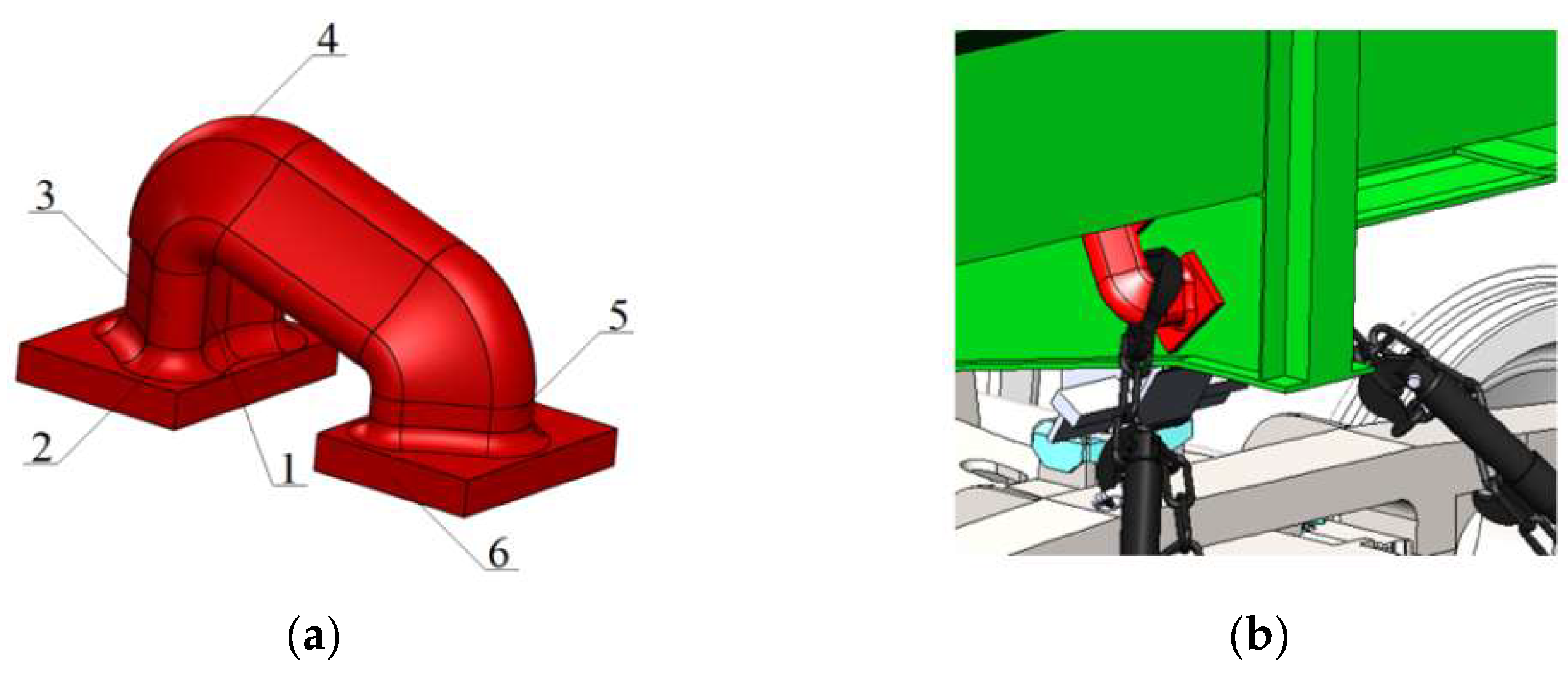
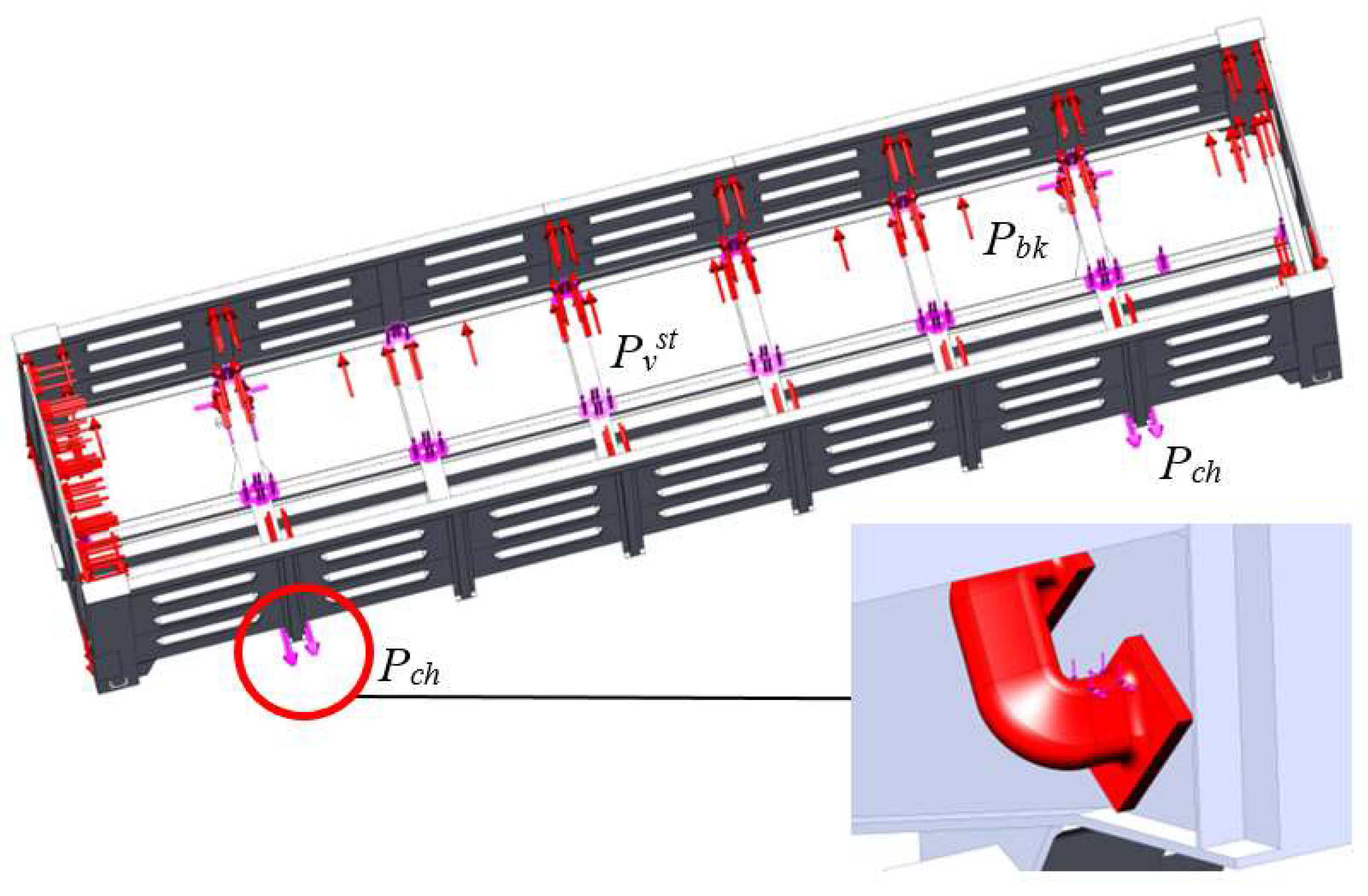
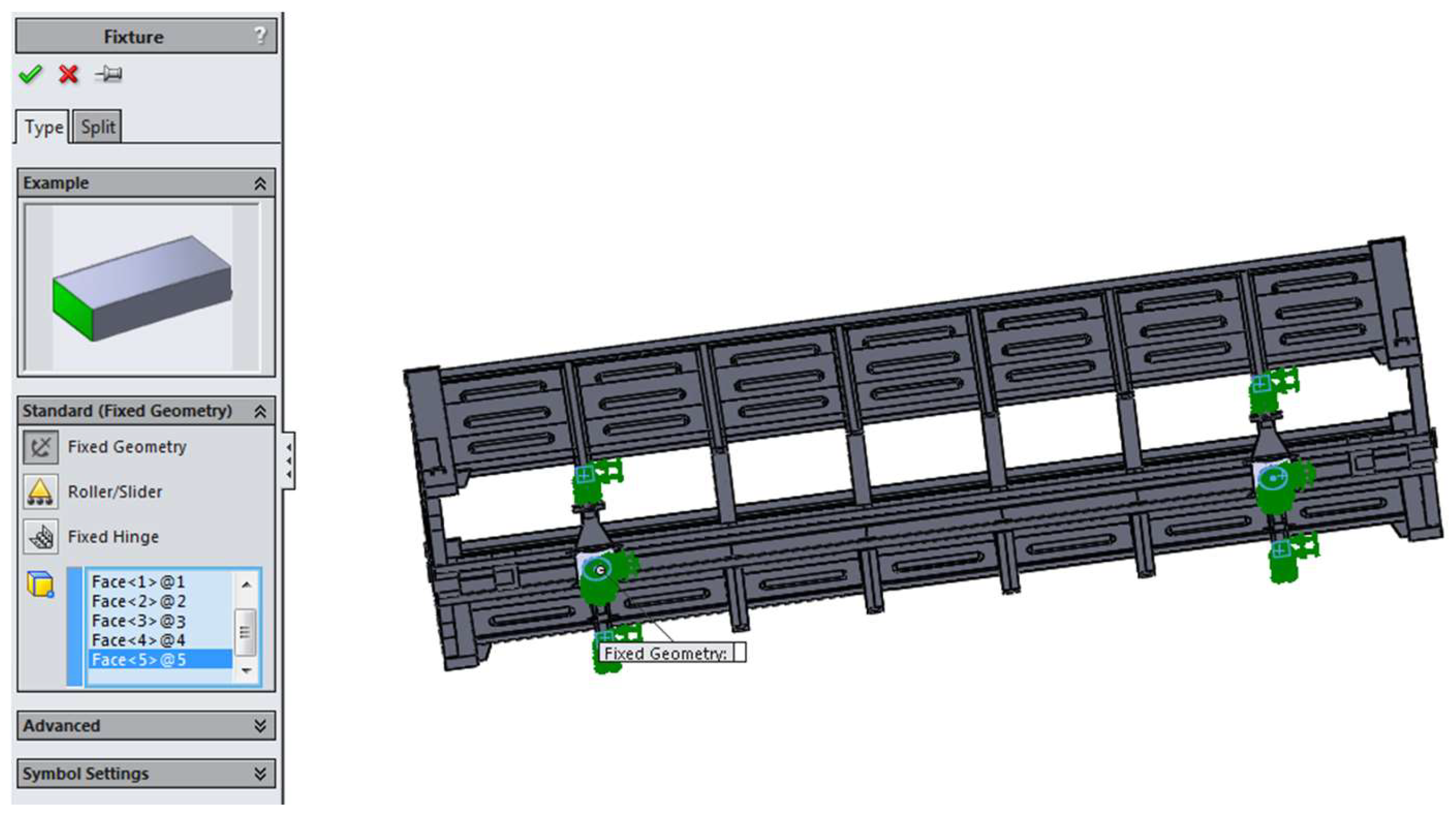

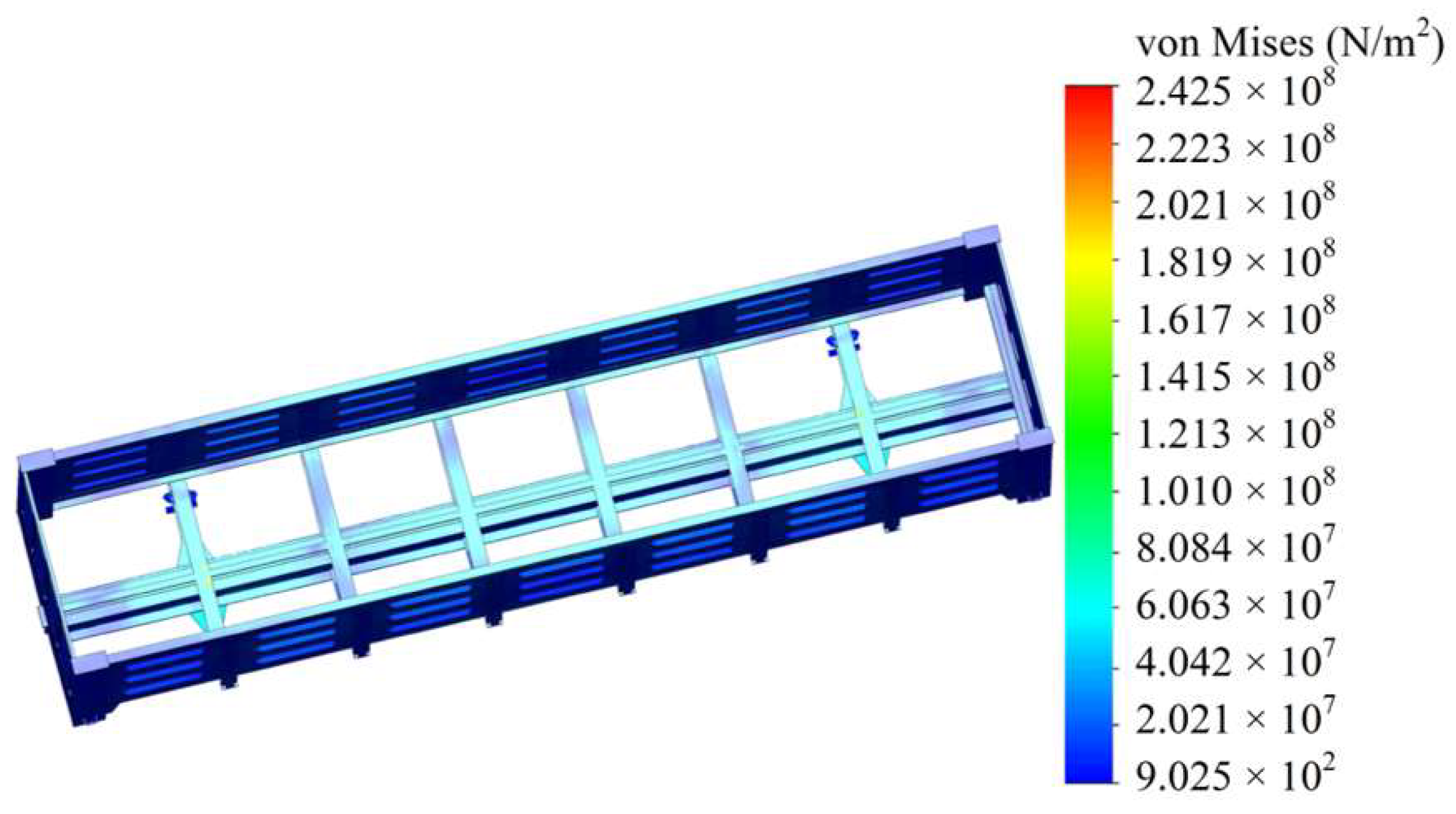

| Parameter | Unit | Value |
|---|---|---|
| Carrying capacity | t | 69.0 |
| Tare weight | t | 25.0 |
| Design speed | km/h | 120 |
| Dimensions | – | 1–VM (0–T) |
| Base | mm | 8670 |
| Length along the coupler axles | mm | 13,920 |
| Number of axles | – | 4 |
| Two-axle bogie | – | 18-100 |
| Inside body length | mm | 11,228 |
| Inside body width | mm | 2964 |
| Inside body height | mm | 2315 |
Disclaimer/Publisher’s Note: The statements, opinions and data contained in all publications are solely those of the individual author(s) and contributor(s) and not of MDPI and/or the editor(s). MDPI and/or the editor(s) disclaim responsibility for any injury to people or property resulting from any ideas, methods, instructions or products referred to in the content. |
© 2023 by the authors. Licensee MDPI, Basel, Switzerland. This article is an open access article distributed under the terms and conditions of the Creative Commons Attribution (CC BY) license (https://creativecommons.org/licenses/by/4.0/).
Share and Cite
Gerlici, J.; Lovska, A.; Fomin, O.; Dižo, J.; Blatnický, M. Strength Analysis of an Open Car Body with Honeycomb Elements during Ro-Ro Transportation. Appl. Sci. 2023, 13, 11022. https://doi.org/10.3390/app131911022
Gerlici J, Lovska A, Fomin O, Dižo J, Blatnický M. Strength Analysis of an Open Car Body with Honeycomb Elements during Ro-Ro Transportation. Applied Sciences. 2023; 13(19):11022. https://doi.org/10.3390/app131911022
Chicago/Turabian StyleGerlici, Juraj, Alyona Lovska, Oleksij Fomin, Ján Dižo, and Miroslav Blatnický. 2023. "Strength Analysis of an Open Car Body with Honeycomb Elements during Ro-Ro Transportation" Applied Sciences 13, no. 19: 11022. https://doi.org/10.3390/app131911022







